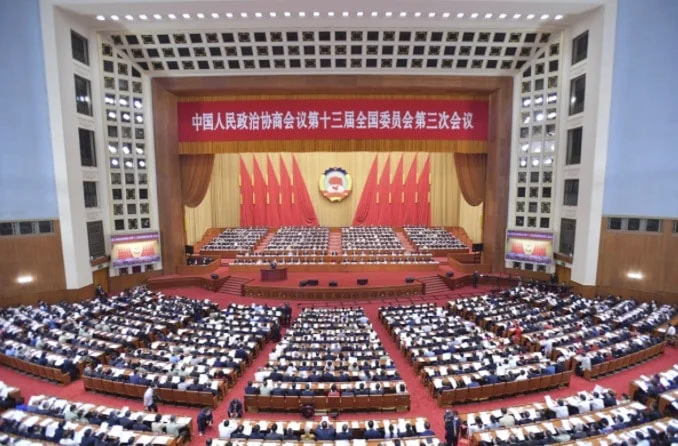China is proposing a plan to create a digital currency for the East Asian region in an attempt to carve out a world away from dominance by the US Dollar.
A report from Nikkei Asia this week unveiled this decision made by the Chinese People’s Political Consultative Conference (CPPCC), China’s political advisory body. The proposal from 10 of the CPPCC members was to create a digital currency that would be backed by a range of fiat currencies, such as the Chinese Yuan, Hong Kong Dollar, Japanese Yen and South Korean Won.
The strongest currencies, the Yen and Yuan, are set to be the main backers but how this will be split will be determined by the strength of each currency at the time. Initial suggestions have said the Yuan will account for 60% and Yen, just 20%. It may appear from this move that China is seeking out allies in challenging the influence of the US and the US Dollar.
This proposal sent waves through the CPPCC as the proposing members were high profile and influential figures such as the co-founder of Chinese travel services giant Ctrip, Neil Shen and Henry Tang, a Hong Kong politician and former Chief Secretary. Both suggested the currency should be made by a private company, rather than the central bank.

Is the the East Asian digital currency a response to Facebook’s Libra LBR token?
What exactly prompted the CPPCC members to come up with this plan is unknown but many believe it could be in response to recent news regarding Facebook and its Libra cryptocurrency project.
The Company had suggested that they will abandon their Libra token plans due to the similarities with the digital Dollar proposed by lawmakers. Instead, they will focus on a multi-currency coin called LBR. It is believed it could emerge as the digital currency of the West, leaving the East behind, as the Libra project has already abandoned plans for a Yen-pegged stablecoin.
China building a world away from US Dollar dominance
The benefits of an East Asian cryptocurrency are clear for Xi Jinping’s China. China, which has seen her economic and political ties with the US deteriorating under Donald Trump’s leadership is actively building a monetary system away from the reserve currency of the world, the US Dollar.
The dominance of the US Dollar has directly enabled the US’ control of global politics. With 70-80% of all worldwide trading being conducted in the Dollar, entire nation’s economies will suffer heavily should they fall on the wrong side of the US’ favour, such as Iran.
China, who has a history of facing the brunt of US sanctions in the past is potentially in the line of fire to be hit by even more sanctions soon. Following the Hong Kong National security law proposal last month, US lawmakers have moved quickly to outlaw it with the threat of sanctions held over China’s heads should they enforce the controversial law.
The threat of sanctions from the US should not be taken lightly either. Just ask Meng Wanzhou, Huawei’s Chief Financial Officer who has been under house arrest in Canada for the past 1.5 years for allegedly trading with sanction hit Iran.
Seeing this problem, China has been slowly looking to build a system away from the US. This tactic was evident when eight-member countries of the Shanghai Cooperation Organization, including China, India, Russia, Pakistan, Kyrgyzstan, Russia, Tajikistan and Uzbekistan, who all decided to trade in local/national currencies instead of the US Dollar at a meeting on March 18th 2020.
However, the shift towards digital currencies is clearly on China’s priority list. China, much like her allies Iran and Venezuela are seeing digital currencies as the future of finance and have attempted to be the leading light in this field.
This was clearly evident with the acceleration of their Digital Currency Electronic Payment (DCEP) project. The currency, which will be tested in Shenzhen, Suzhou, Xiong’an and Chengdu, was created with a purpose of knocking out the US Dollar’s dominance.
How this proposed East Asian currency will fit in with DCEP is unclear, but reports have suggested that it too will be international in its outlook. Recent reports from South Korea has suggested that DCEP could be used by Chinese tourists in the nation, although with no official date for launching the Digital Yuan, how this will work is still up in the air.
What is clear however is that with DCEP and the East Asian Digital Currency, China is escalating her challenge of the US’ dominance through digital currencies whilst the US continues to be tangled up in regulatory issues.
Further Reading

